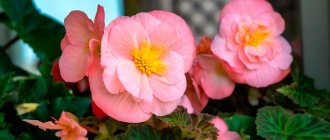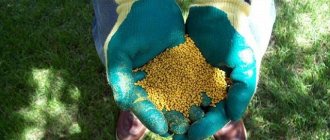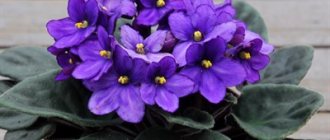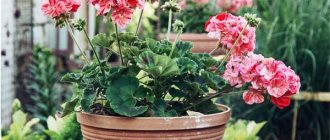It is believed that daffodils are elegant and unpretentious flowers that decorate only garden plots. But that's not true! Narcissists may well be suited to home conditions. You just need to know which plant varieties should be preferred, how to select the correct bulbs and plant flowers in pots, and how to care for them. So, what do you need to know about daffodils growing at home?
Which daffodils should you grow at home?
Daffodils can easily adapt to home living conditions, be in pots and delight the inhabitants of the house with wonderful flowers for a long period from winter to spring. But to do this you need to know what varieties of daffodils can grow at home. The following varieties are chosen more often than other varieties for indoor conditions:
- Papery;
- Little gem;
- Avalanche;
- February Gold;
- Ziva;
- Snowball.
Also, daffodils are grown at home: “Erlichir”, “Verge” or “Geranium”.
The most undemanding in terms of conditions of detention are “Avalanche”, “Paper-shaped”, “Ziva”. They are also characterized by the longest flowering period. Plant flowers can be of different colors: yellow, white, cream, beige. The Avalanche variety, for example, is characterized by the presence of white petals and a yellow core. "Erlichir" stands out for its unique velvety flower structure. Daffodils of different varieties can differ in size from each other.
Daffodil planting time
In different regions and climatic zones, the timing of planting daffodils may vary, so there is no single date. For good rooting and subsequent overwintering of the bulbs, you need to focus on weather conditions. As soon as the soil temperature drops to +8+10С and lasts for about two weeks, planting can be carried out. In central Russia this is the period from August 15 to September 1. But due to the climate change in recent years, this period can be extended until September 15
It is important to comply with these deadlines, otherwise in the spring flowering may not occur or will not meet your expectations.
Before the soil freezes, the root system should form in the bulbs, but the above-ground parts should not develop. Bulbs planted early and starting to grow may freeze from autumn frosts. At high temperatures and soil moisture, the growing roots of the bulbs may rot. Late planting does not contribute to the rooting of the bulbs; they are more susceptible to freezing and in the spring they produce small flowers on low peduncles. If you are late with planting, you can plant the bulbs in October or November, taking advantage of the thaw, but covering the plantings is a prerequisite.
Cover daffodils when persistent frosts occur. Some varieties of daffodils cannot overwinter without shelter, but if possible, it is better to cover all plantings. The covering material is dry foliage, spruce branches, peat, compost, chopped straw, and hardwood sawdust. You can cover with non-woven covering material, but not with plastic film.
Selection of bulbs for growing
In order for the plant to quickly and easily adapt to indoor conditions, it is necessary to select large, hard bulbs for planting. They should not have defects: dark spots, scratches, holes, rot. It is better to immediately plant flower bulbs purchased for indoor growing in pots. If you need to store the bulbs somewhere before planting, then choose a ventilated room where it is dry and warm, since in a damp and cool place the bulbs can take root ahead of time or be affected by fungus.
Planting a flower indoors
Drainage is placed in the lower part of the pot, which may consist of small pebbles (pebbles), poured 2-3 cm high. Drainage is needed to maximize the movement of oxygen and remove excess moisture after watering the plant. Soil is poured onto the drainage to the top of the pot. The bulbs are planted by slightly pressing them into the ground, with the upper part of the bulb rising above the surface of the ground.
It is quite possible to plant more than one onion in one pot. This is determined by the size of the pot. So, with a container with a diameter of 9 cm, 3 onions of 1 cm in size will fit there. The bulbs should not stick together. Having finished planting, moderately water the soil, avoiding overwatering and rotting.
For better rooting of plant germination, the container with the planted flower is placed in a room with dark and cool conditions for 3 months. There the temperature is maintained within 3-8° C. After this, the planted plant must be placed in the light. Since the “Paper-shaped” daffodil and the “Ziva” variety do not require exposure to the cold, they are placed on the windowsill immediately after planting.
Bulbs are planted in accordance with the expected flowering period. In order to ensure the plant blooms before the winter period, they try to plant it in early autumn. For spring flowering, planting is carried out towards the end of autumn - beginning of winter. In order to more accurately determine the time of planting, you should familiarize yourself with the recommendations for this variety.
Description of the main types of zephyranthes
There are different types of zephyranthes, they differ in their color, leaf and flower shape. From the photo you can determine their differences . The following varieties exist:
- Zephyranthes white (Candida zephyranthes candida) - its flowering occurs from early July to late September. Large flowering with a diameter of up to six cm, peduncle height up to thirty cm. The bulb has an oblong shape;
- golden zephyranthes (zephyranthes aurea) – the peduncle also reaches thirty cm in height, the bulb has a rounded shape, flowering begins in January;
- Zephyranthes pink, rosea (Lindleya zephyranthes rosea) - the most powerful flower, its diameter is 8 cm, while the bulb does not exceed three cm, feather-shaped leaves, up to 30 cm long. Robustus has a bright pink color, with a yellow core;
- zephyranthes variegated (zephyranthes versicolor) - the flower has a two-color color, usually white predominates, with a slight pink border, flowering begins with the arrival of spring and lasts for several months, the bulb is round and small in size.
Plant care
Caring for daffodils growing at home as potted crops does not require much effort. You just have to take into account some recommendations, and beautiful daffodils will delight your household and all guests, for example, on Women's Day on March 8th. First of all, you should not place the container with the plant on the windowsill close to other flowers. The fact is that daffodils contain substances with toxic properties that can negatively affect the fragile roots of plants that are difficult to care for.
Daffodils must be watered immediately after planting. During rooting of the plant, moderate watering is carried out once every 2 weeks. When the container with the daffodil is in the room on the windowsill, more frequent watering is possible depending on the drying of the soil. When watering, it is better to use non-cold water and pour it into a tray. During the flowering period, water the plant more often, at the end of the period - less often. Stop watering the daffodil when the leaves turn yellow.
For better adaptation to home conditions, which consists in rooting and flowering of the plant, daffodils require feeding with nitrogen-potassium fertilizers. Initially, feeding is done when sprouts form, then when buds appear, once every 2 weeks. During flowering, the plant does not need to be fertilized. It is important to remember that when the flowers appear, the narcissus needs cooler temperature conditions (10-12°C) to increase the flowering period, which will last up to 3 weeks.
Caring for daffodils after the flowering period
Plants require some care after flowering time. Dried flowers are cut off. The other parts of the daffodils are allowed to dry completely. For 10 days, the plant is watered moderately and fertilized. When the narcissus leaves completely wither, they are carefully removed with a knife (scissors). The container with the plant bulbs in it is taken to a room with a cooler climate.
The bulbs can also be placed in a small cloth bag or paper package, freeing them from the soil; place it somewhere cool and dark, for example in the refrigerator. Daffodil bulbs affected by rot or other disease are thrown away. At home, flowers from the same bulb are grown no more than 3 times. It should be taken into account that every year with such forcing, flowering will not be so abundant every year, and the size of the flowers will decrease. Typically, such bulbs are transferred to garden plots at the beginning of summer.
Forcing daffodils in a pot: planting and care step by step with video
Before planting in a pot, it is recommended to disinfect daffodil bulbs for 30 minutes in a pink solution of potassium permanganate.
And now ATTENTION ! To make daffodils bloom in a pot about 2 months after planting, place the bottom of the bulbs for two weeks in a solution of any growth stimulant and keep in a cool place. The vegetable section of the refrigerator or a room with the same temperature will do. After this, you can begin planting.
How to plant daffodils in a pot and care for them after planting:
- The first layer in the pot is poured drainage (3-4 cm), which is covered with soil. The soil layer should be about 5 cm for large onions and a little less for small ones.
- Gently press the bulbs bottom down and fill them with soil so that the upper third part remains uncovered.
- Place the onions almost close to each other, but not end to end. There should be very little distance between them, otherwise they may be affected by fungal diseases.
- Place sand between the bulbs. It will protect them from rotting.
- Water the plantings with settled water.
- Cover the pots with a dark cloth and place in a cool place from +2 to +9 degrees.
- Monitor soil moisture. Maybe during rooting over the course of a month it will need to be slightly moistened two or three times.
- As soon as the sprouts appear and reach a height of 3-4 cm, remove the cover and place the pots with daffodils in a bright place with a temperature of +10 degrees. Attention! If you immediately place it in a warm room, the peduncle may stretch out or even the bulb may not bloom.
- After 3-4 days, place the potted daffodils in the room and you can wait for the flowers.
You will be interested to know: Autumn planting of fritillaria (hazel grouse): when and how to plant bulbs correctly step by step with photos and videos
With proper planting and care during the forcing period, daffodils will bloom in 24-30 days. It all depends on the type of flower.
Advice! To get a lawn of daffodils that blooms for a long time at home, plant varieties of different ripening periods in several pots.
WATCH THE VIDEO - HOW TO PLANT DADDLES FOR FORCING IN POTS
What do indoor daffodils suffer from?
Most often, home daffodils suffer from fungal infections. This happens if you overwater the plant or store the planting bulbs in a very warm place in the room. To prevent such a disease, they are treated with fungicidal preparations before planting. Also, mites, bulbous types of flies, and tiny worms - nematodes can become pests of the normal development of narcissus.
In order to avoid the action of pests, the soil in the container with the plant is loosened, dry and limp leaves are removed, and treated with insecticides. In addition to the listed measures to prevent narcissus diseases, you need to follow the main rules for caring for the plant:
- watering should not be very large;
- Planting materials (bulbs) should not be stored at temperatures exceeding 10°C.
So, it is quite possible to grow daffodils at home. Forcing plants does not require special care, time or money. You just need to follow some rules when planting and caring, and beautiful daffodils will decorate your apartment and become a wonderful hand-grown gift.











